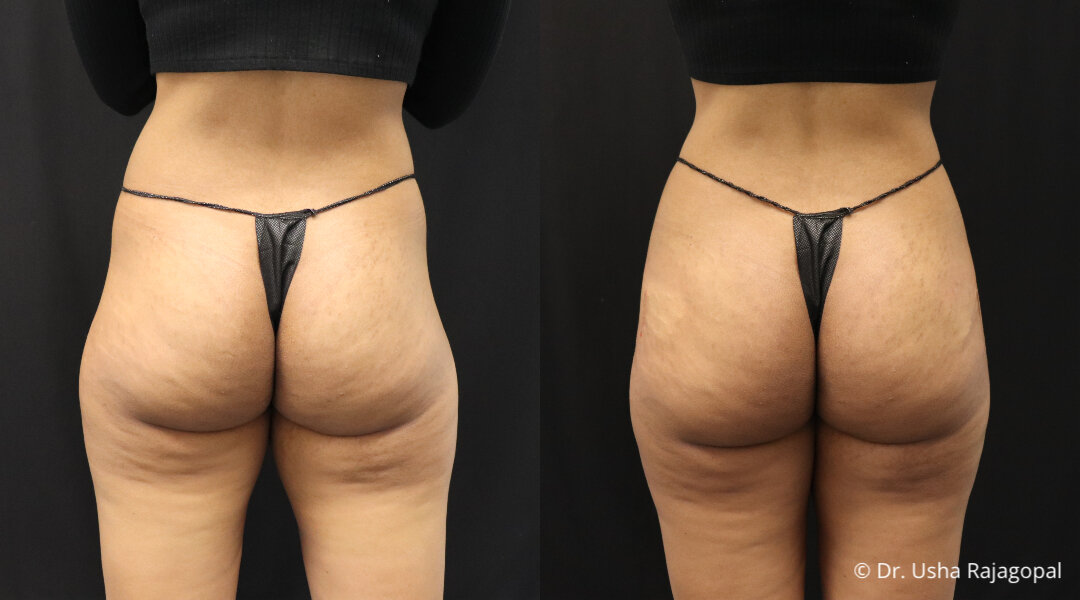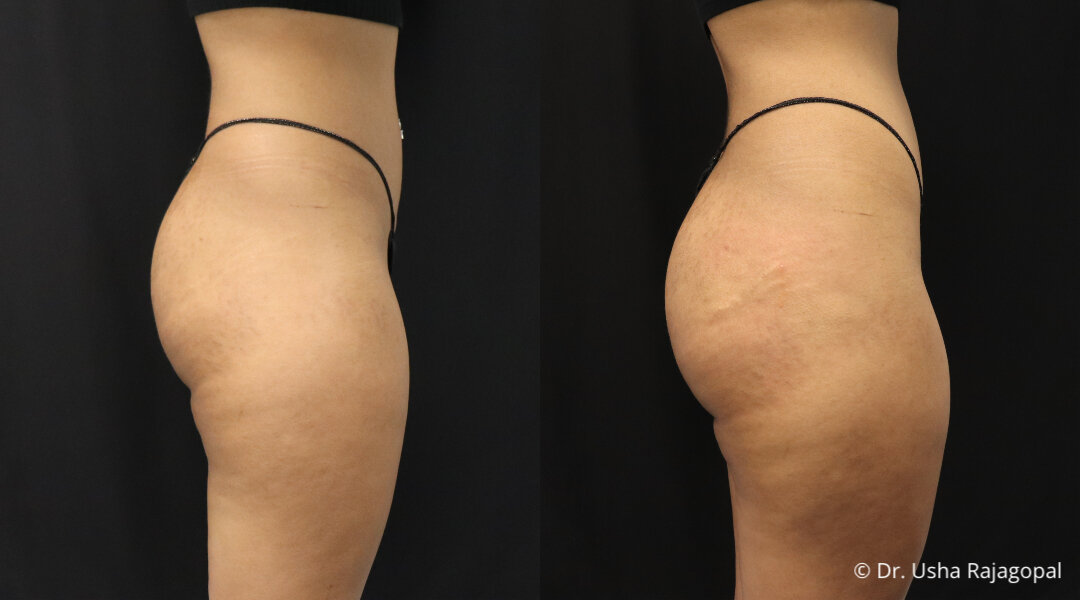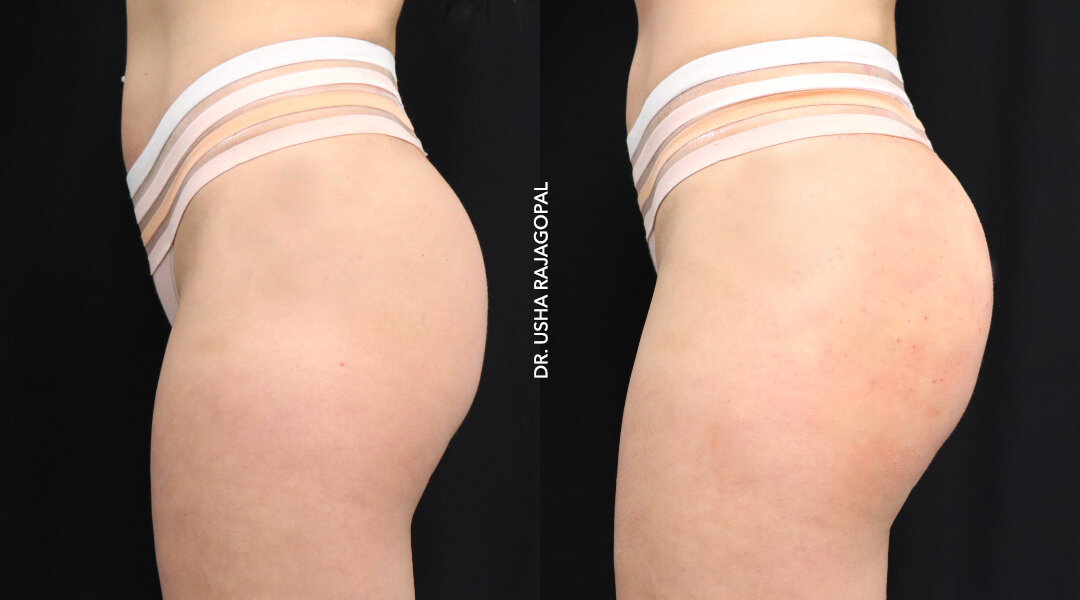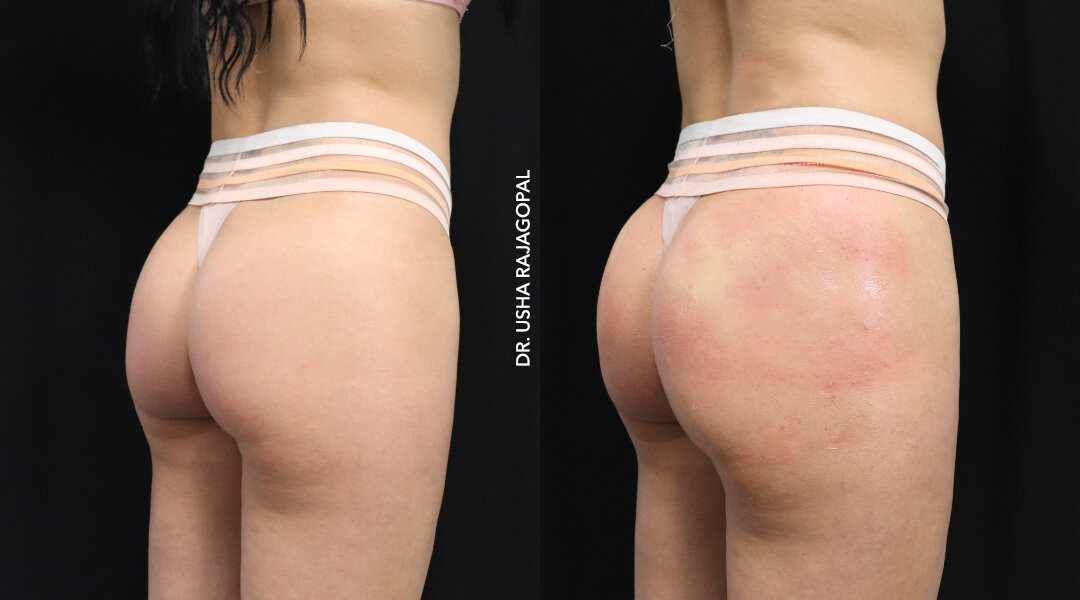Patient Goals: Our patient is a young woman in her late-thirties, wanting to look refreshed. Her chief concern was her smile lines (laugh lines/nasolabial folds).
Treatment Plan: When assessing the smile lines, it’s important to consider the surrounding structures like the cheeks, which provide integral support and structure to the mid- and lower-face. We first treated the anterior and lateral cheeks with 3 syringes of Juvederm Voluma. We then treated the nasolabial folds (smile lines) and marionette lines using 1 syringe of Juvederm Vollure. To support the marionette lines and jowls, we also placed 2 syringes of Juvederm Voluma in the chin, pre-jowls, and angle of the mandible. Lastly, we used both cannula and injection techniques with 1.0cc Juvederm Volbella to enhance and support the infra-orbital hollows (under eyes).
Results: By strategically placing filler for structure and volume restoration, we were able to significantly improve the appearance of the under eyes, smile lines, marionette lines, and jowls. This created a more youthful, lifted appearance for our stunning patient.
Who is a good candidate? Patients who have noticed volume loss, or the development or deepening of facial static (resting) lines, folds, and creases.
Am I a better candidate for surgery? Filler provides support, structure, and volume restoration. You may be a better surgical candidate if you have noticed significant volume loss and skin sagging, most often appreciable in the 6th and 7th decades of life (50-60+). We may need to reposition and support deeper structures such as the superficial muscular aponeurotic system (SMAS), which allows us to reposition ligaments and soft tissue, providing long-term results. Additionally, we may recommend fat transfer to the under eyes, cheeks, smile lines, marionette lines, lips and chin to provide volume restoration for a more youthful look.
Maintenance: We recommend returning annually for facial harmonization/volume restoration treatments with filler.
Learn more about facial balancing: e-mail consultations can be held with Nurse Sage. Please send straight on, 45 degree angle, and profile view photos to our office e-mail: hello@sfcosmeticsurgery.com








